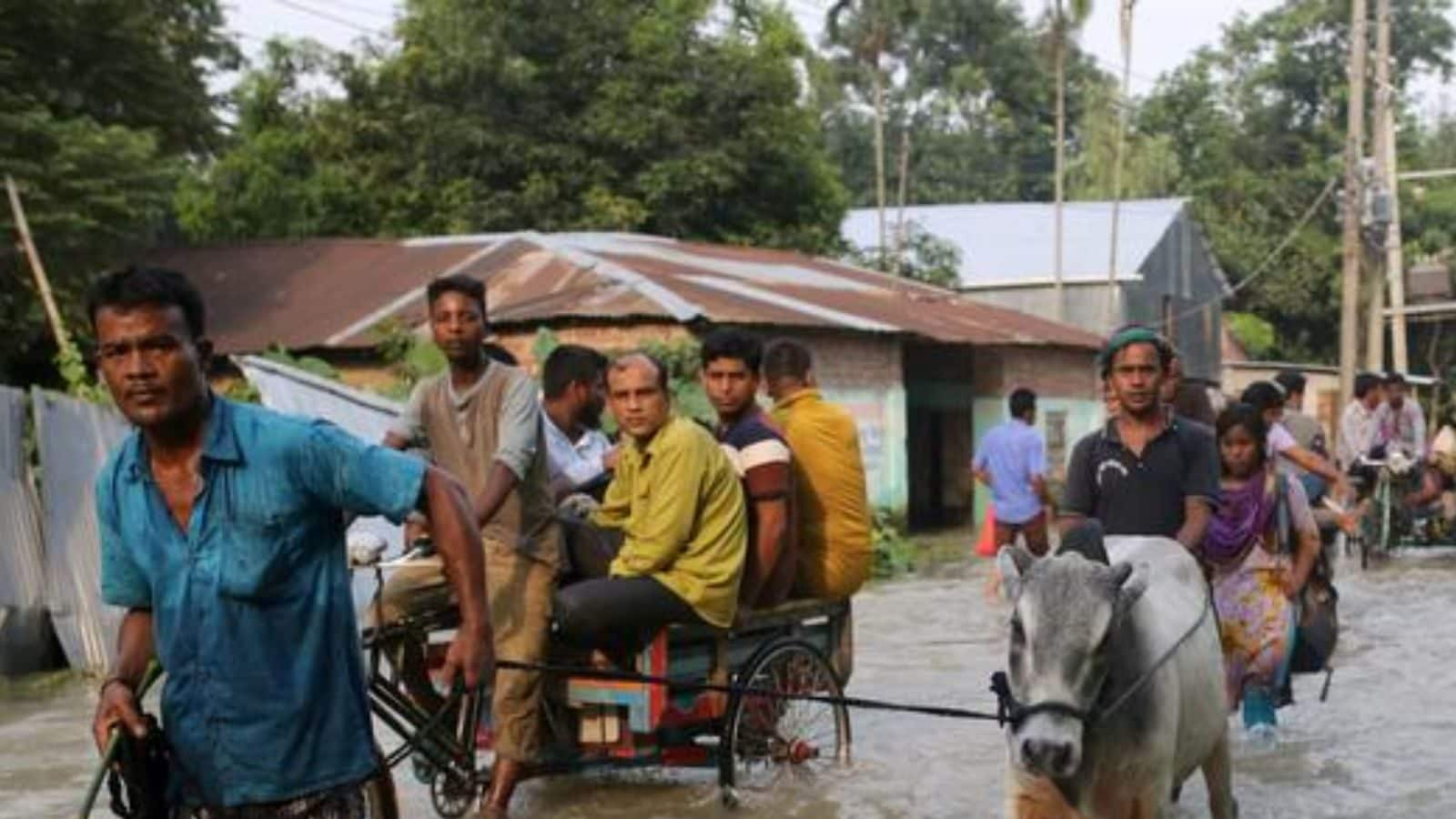Bangladesh Military Scrambles to Reach Millions Marooned After Deadly Flooding
Soldiers on small boats delivered relief material on Monday across flooded towns and villages in Bangladesh, after more than nine million people were marooned in the low-lying country and neighbouring India following heavy rains, officials said.
At least 32 people have been killed in Bangladesh since late last week following monsoon downpours that triggered catastrophic flooding in the northeastern Sylhet administrative division, leaving around a quarter of its 15 million population stranded amid fast-rising waters and swollen rivers.
“The flooding is the worst in 122 years in the Sylhet region,” Atiqul Haque, Director General of Bangladesh’s Department of Disaster Management, told Reuters, adding that a dozen districts in the north and northeast had been swamped by floods.
“Rescue and relief operations have been intensified, with army and navy officials reaching out to more people trapped in floodwater,” Haque said.
Large swathes of entire settlements were submerged under brown swirling waters, as military personnel in boats arrived with drinking water and food for people sheltering in the upper floors of buildings, local television footage showed.
Government authorities are attempting to deliver 1,720 tonnes of rice and 58,000 packets of dry food to flood-hit communities, besides water purification tablets and medicines.
SURROUNDING HILLS
The situation in Bangladesh has been worsened by waters cascading down from the surrounding hills of India’s Meghalaya state, including some of world’s wettest areas like Mawsynram and Cherrapunji which each received more than 970mm (38 inches) of rain on Sunday, according to government data.
Meghalaya and neighbouring Assam state have received 134% more rainfall than the average in June, according to data compiled by the state-run India Meteorological Department.
In Bangladesh, around 300,000 people have been moved to shelters in Sylhet but more than four million people are stranded near their homes.
“The situation is still alarming,” Mohammad Mosharraf Hossain, Sylhet division’s chief administrator, told Reuters by phone.
“We are intensifying our efforts providing relief materials. At the moment, the main challenge is to reach everyone and ensuring availability of drinking water.”
Khalilur Rahman, a resident of Sylhet’s Sunamganj district, said flood waters had swamped the ground floor of his two-storied house.
“I have never seen such floods in my life,” Rahman, 43, told Reuters by phone, adding that there had been no electricity since heavy rains began on Thursday night. “Dry food is running out, there is no drinking water.”
In India’s Assam, where at least 26 people have been killed since heavy rains began around a fortnight ago, flood waters have started receding, the state government said.
But 4.5 million people have been forced from their homes, with around 220,000 staying in makeshift shelters run by the government. Over a million hectares of farmland have been flooded.
“The overall flood situation is improving,” Assam’s Water Resources Minister Pijush Hazarika told Reuters.
“Now the biggest challenge is to reach out to the displaced people and provide them with relief materials.”
The South Asian neighbours have experienced increasing extreme weather in recent years, causing large-scale damage, and environmentalists warn that climate change could lead to more disasters, especially in densely populated Bangladesh.
Read all the Latest News , Breaking News , watch Top Videos and Live TV here.
For all the latest world News Click Here

